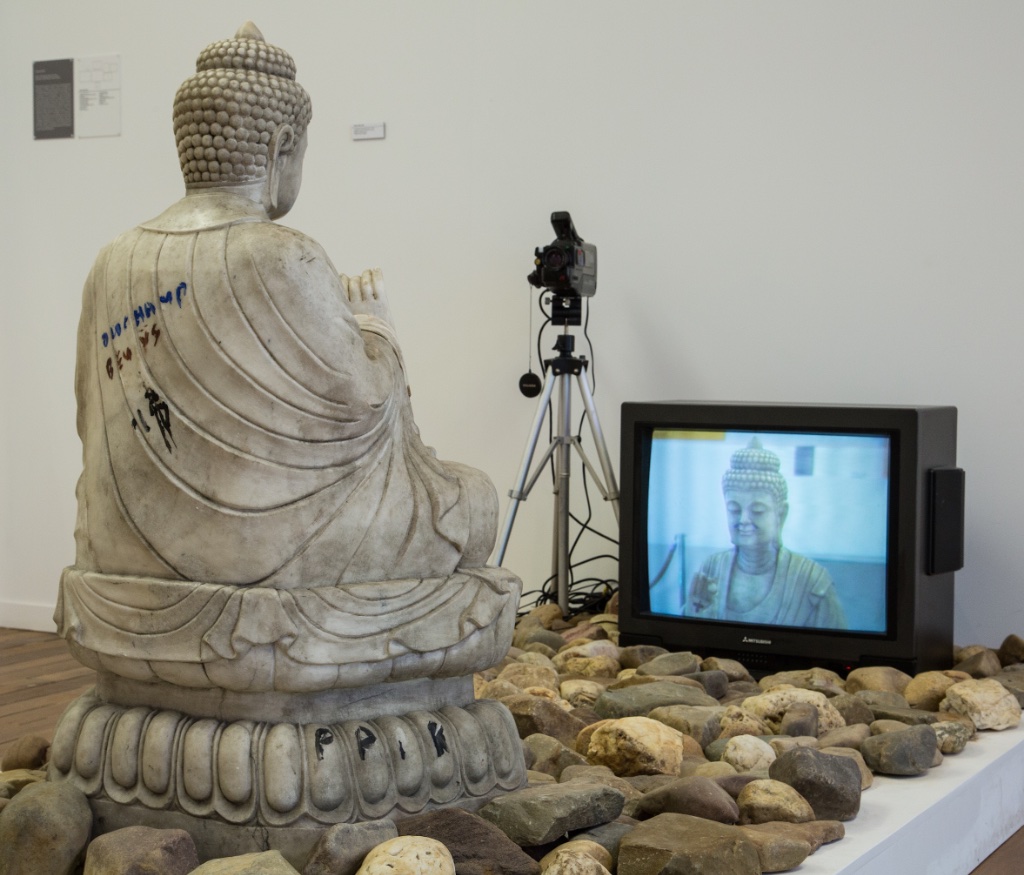
The words “ebullient” and “irrepressible” are weak when it comes to Ben, the 87-year-old Fluxus artist, who showed up last week at the Fondation de Doute (Doubt Foundation) art center in Blois to celebrate the 60th anniversary of the Fluxus movement with an exhibition of his own work, “L’Égo Indestructible” (“The Indestructible Ego”). He sat with a group of journalists, challenging them to ask him questions, any question. “I can go on for hours,” he said, and he did.
Speaking of ego, he asked: “Is ego going to lead us to nuclear war?” and added a message for Vladimir Putin while he was at it: “Negotiate!” Beyond him on the wall was one of his famous thought-provoking, hand-painted questions: De quoi avez-vous peur?” (“What are you afraid of?). When asked his own question, he thought for a moment before answering. “I’m afraid that my wife won’t love me anymore.” he said. After 40 years of marriage, it’s possible but seems unlikely.

All is ego for Ben, whose unused family name, by the way, is Vautier. He ends the eponymous book that accompanies the exhibition, full of his random speculations on the nature of ego, with this thought: “When they say to me, Ben, you break down open doors, I say, mea culpa.”
He sees questioning as the basis of Fluxus art, of which he was a pioneer, and delights in the paradoxical, as did the Fluxus artists, who emerged in the early 1960s – names like Yoko Ono, Nam June Paik, Joseph Beuys, John Cage, George Brecht, Ben Patterson, Carolee Schneemann, Daniel Spoerri and Wolf Vostell, all of whom are included in the permanent exhibition on the foundation’s second floor, much of which comes from Ben’s own collection. More or less direct descendants of the iconoclastic Dadaists of the 1920s, they found great inspiration in the work of Marcel Duchamp.

Humor is an integral element of Fluxus, which encompasses music, sound, text, objects and images and confronts them in new ways that sometimes shock but most often raise an ironic smile or even a laugh. A visit to the foundation’s collection is proof that Fluxus is fun. These are artists who like to play, and “playing is creativity,” as the foundation’s director, Alain Goulesque, noted.
Although the Fluxus artists focused more on process and performance than objects that could be hung on a museum wall, the exhibition manages to bring together not only photos and films of Fluxus performances, but many, many relics of them.

Nam June Paik’s “TV-Buddha Duchamp-Beuys” (1989), for example, consists of a marble statue of Buddha raising his hand in a spiritual gesture while watching himself – and any spectator who happens to stand facing the camera – on a TV monitor, a kind of selfie while meditating. In this version of the piece, produced a number of times by Paik, the words “Duchamp,” “Beuys” and “1$” have been scribbled on the back of the statue, and river stones have been placed on the platform between the Buddha and the TV set.

Other artifacts include pianos that were attacked, turned upside-down or otherwise deformed during famous Fluxus performances. One room is filled with the remains of meals enjoyed by Daniel Spoerri and his friends, glued to the table exactly as they were left behind by the guests and hung on the wall. If you hear a concert of strange squeaking and banging sounds, it is probably coming from Wolf Vostell’s installation “Fandango” (1974/75-77), which consists of hammers banging on 25 car doors.
In addition to the permanent collection and temporary exhibitions, the foundation is home to a music conservatory, a theater and a charming café. Do pay a visit to this unique place while you are in Blois, with its magnificent hilltop royal château, winding streets and half-timbered houses, to see another side of the lovely Loire Valley town. The pavilion in the foundation’s courtyard is set up with a big round table, ready for debates on the question of doubt.
We left Ben drinking beer from a bottle labeled “Le Doute” in the courtyard of the Doubt Foundation, where the walls are paved with enamel plaques of his sayings. He was recounting past Fluxus performances while sitting under a banner reading, “To create is to doubt, and to doubt is to create.”
See our list of Current & Upcoming Exhibitions to find out what’s happening in the Paris art world.
Favorite